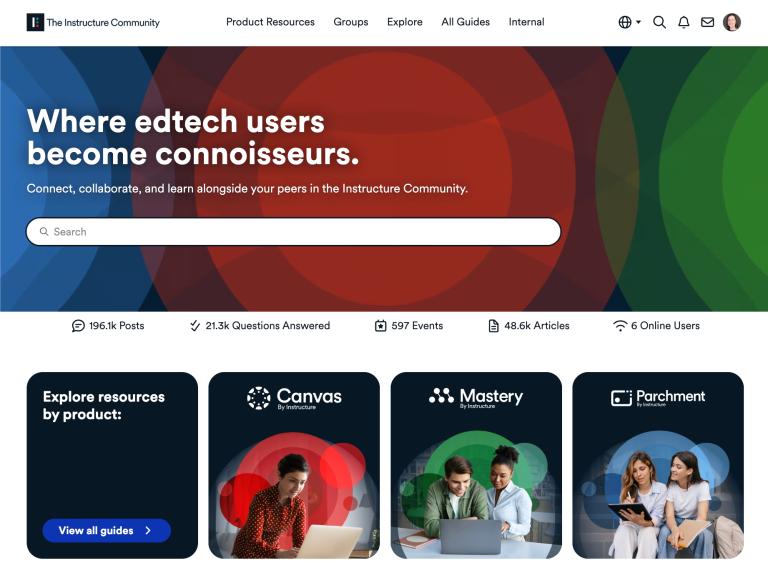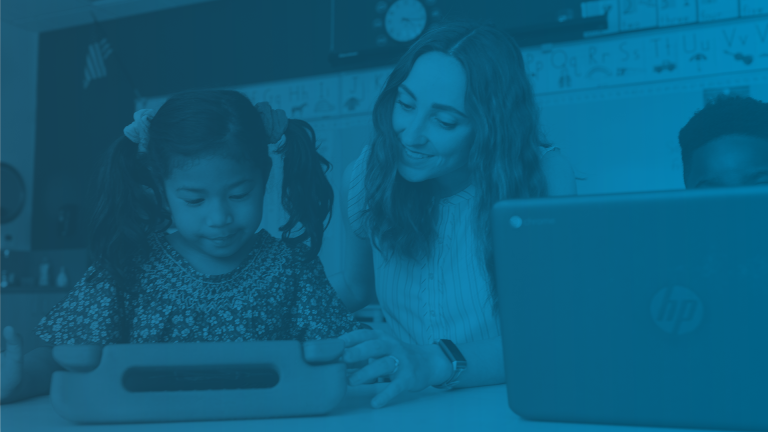As we progress with technology-enhanced learning in the classroom, digital literacy is necessary to navigate technologies effectively with understanding and integrity. Digital literacy is the ability to obtain, apply, and transfer knowledge across digital platforms. This skill set fosters and increases student success, whether in-person, hybrid, or online. Adopting strategies to promote digital literacy across students and faculty allows schools and institutions to effectively implement technology in their curricula.
However, maintaining a safe virtual learning space is a priority as technology evolves. Digital citizenship is the safe, responsible, and ethical usage of digital tools. Both digital literacy and citizenship impact engagement and success in the classroom.
Benefits of Digital Literacy and Citizenship include:
- Expand student learning opportunities
- Increase academic performance and engagement
- Support collaboration between educators and students
- Improve online safety and digital responsibility
- Help educators integrate technology into instruction
The 8 C’s of Digital Literacy
Teaching digital literacy can be challenging without examining its eight microelements, divided by four skill sets and four mindsets.
Communicative: Reading, writing, listening, and speaking across platforms
Collaborative: Working with peers and instructors to complete coursework
Creative: Using digital tools to innovate, crafting impressive projects and presentations
Cultural: Understanding digital social responsibility and etiquette
Civic: Participating in digital social movements
Critical: Analyzing and evaluating digital content
Cognitive: Learning to use digital tools and features effectively
Confident: Feeling assured and comfortable navigating digital spaces
Consider the 8 C’s as we dig deeper into digital literacy instruction and strategy.
9 Elements of Digital Citizenship in Education
Protect the learning ecosystem by promoting responsible online behavior and creating safe technology-enhanced learning opportunities. Learn how with the nine elements of digital citizenship.
- Digital Access
Equity and accessibility affect how students learn and receive educational opportunities. Schools and institutions continue to bridge the digital divide gap ensuring students have access to technology and digital learning resources.
- Digital Commerce
Digital commerce refers to online buying, selling, and exchanging goods. As online consumerism expands, understanding financial transactions in digital spaces is essential. As a result, K-12 students understand their role as consumers, and Higher ed students use digital financial tools for future career success.
- Digital Communication
Canvas LMS and other digital tools make it easier for teachers and students to communicate through course announcements, calendar updates, personalized assignment feedback, and messaging. Digital communication exchanges information, shares thoughts, and manage academic relationships.
- Digital Etiquette
Maintaining a professional and safe digital learning environment requires communication and collaboration that positively impact the academic culture, especially regarding the behaviors and standards enforced by educational institutions.
- Digital Fluency
As digital tools evolve, adapting to new and emerging technologies benefits students and educators. Digital fluency is the ability to use and understand technologies as they develop.
- Digital Health & Welfare
Technology can physically and emotionally impact users, motivating administration and educators to monitor consumption. However, technology can also help maintain wellness through digital healthcare. Schools and institutions often provide counseling and nurse care to support health.
- Digital Law
There are policies to protect users from harm and harassment. Digital law is a shield, providing legal protection to address digital disputes. Institutions should ensure their policies and usage align with the latest digital laws.
- Digital Rights & Responsibility
Access to digital tools comes with responsibilities, ensuring all users are accountable for their online behavior. Administrators, educators, and students should consider institutional freedoms and restrictions regarding digital conduct.
- Digital Security and Privacy
Security awareness and training can help prevent viruses, malware attacks, and other security breaches. Protect personal information by monitoring both device and digital tool access.
6 Core Digital Citizenship Topics
In efforts to make the nine digital citizenship elements digestible for learners, educators can focus on six core topics. The core topics teach K-12 students digital ownership inside and outside the classroom.
Media Balance and Wellbeing: Help students develop healthy habits as they learn how media affects them and their communities.
Privacy and Security: Teach students how to protect their personal information and prevent cyber security attacks.
Digital Footprint and Identity: Prompt students to reflect on their online behavior and how it affects their digital identity.
Relationships & Communication: Support students in developing healthy relationships and communication styles.
Cyberbullying, Digital Drama, & Hate Speech: Discuss the damaging effects of negative online behavior and discover ways to build positive online communities.
News & Media Literacy: Teach students to access and identify credible informational sources.
Key Digital Literacy & Citizenship Lessons
Implementing strategies to teach the effective use of digital tools promotes a positive culture and relationship with technology in K-20 institutions. Here are a few key lessons in both areas.
Lessons in Digital Literacy
- Develop effective communication across digital platforms
- Collaborate with educators and peers using digital tools
- Utilize tools for coursework, presentations, and projects
- Effectively navigate online tools such as a learning management system
Lessons in Digital Citizenship
- Maintain positive relationships with peers and educators
- Prioritize physical and mental wellbeing
- Protect personal information and secure devices
- Determine the credibility of online resources
- Uphold academic integrity & ethics
Digital Literacy & Citizenship for Educators
Schools are making strides to ensure their educators are equipped with the latest educational technologies and use digital tools to create effective learning environments. Educators can adopt digital literacy techniques and implement strategies that model best practices to students.
How digital literacy impacts K-20 Educators:
- Provides access to digital educational tools and resources
- Enhances classroom instruction and engagement
- Promotes professional development
- Improves communication with administration, colleagues, students, and parents
Digital Literacy for Families
Schools and educators can provide families with tools, increasing student support at home. Learn how family involvement can benefit students, contribute to student success, and build community.
How digital literacy & citizenship benefits parents/guardians:
- Monitor student performance
- Communicate with educators
- Stay informed, updated, and involved
- Support student participation
Support Digital Literacy with the Right Tools
Develop and practice digital literacy using tools to support technology-enhanced learning, amplify teaching, and improve learning outcomes. Learn more about the future of technology in K-12 schools and how digital tools can facilitate learning in higher education.
Related Content
 inst-3step.jpg
inst-3step.jpgBlogs
 13lmsfeaturesthatbenefitstudentlearning.jpg
13lmsfeaturesthatbenefitstudentlearning.jpgBlogs
 community-homepage.jpg
community-homepage.jpgBlogs

